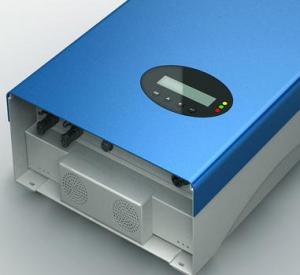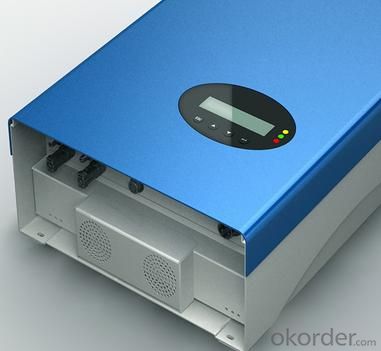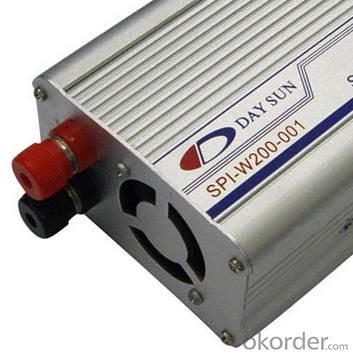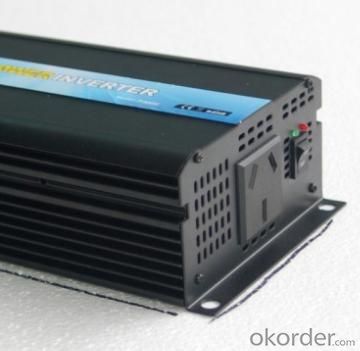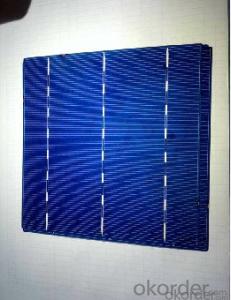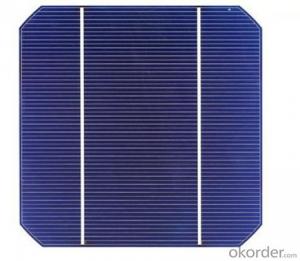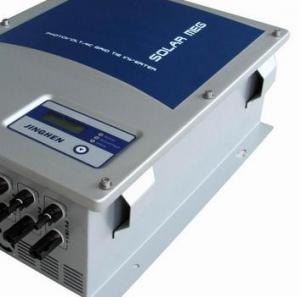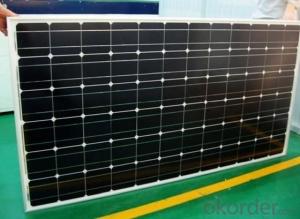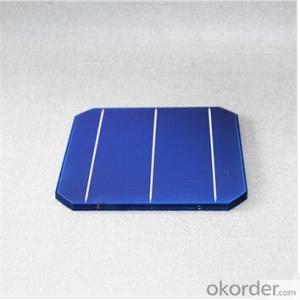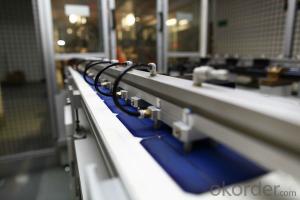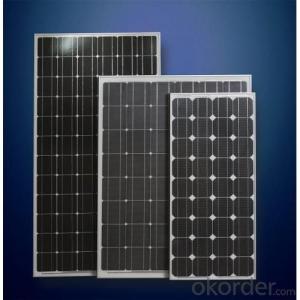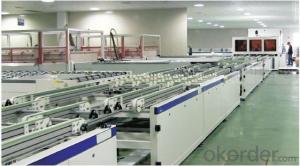High Efficiency Monocrystalline Solar Module with Organic Printed Solar Cells
- Loading Port:
- Shanghai
- Payment Terms:
- TT or LC
- Min Order Qty:
- 2250 watt
- Supply Capability:
- 30000000 watt/month
OKorder Service Pledge
OKorder Financial Service
You Might Also Like
1, Product desciption
Inverter circuits designed to produce a variable output voltage range are often used within motor speed controllers.
The DC power for the inverter section can be derived from a normal AC wall outlet or some other source. Control and feedback circuitry is used to adjust the final output of the inverter section which will ultimately determine the speed of the motor operating under its mechanical load.
Motor speed control needs are numerous and include things like: industrial motor driven equipment, electric vehicles, rail transport systems, and power tools. (See related: variable-frequency drive ) Switching states are developed for positive, negative and zero voltages as per the patterns given in the switching Table.
The generated gate pulses are given to each switch in accordance with the developed pattern and thus the output is obtained.
2, Features of the product
Inverters convert low frequency main AC power to higher frequency for use in induction heating.
To do this, AC power is first rectified to provide DC power. The inverter then changes the DC power to high frequency AC power. Due to the reduction in the number of DC Sources employed, the structure becomes more reliable and the output voltage has higher resolution due to an increase in the number of steps so that the reference sinusoidal voltage can be better achieved.
This configuration has recently become very popular in AC power supply and adjustable speed drive applications. This new inverter can avoid extra clamping diodes or voltage balancing capacitors. There are three kinds of level shifted modulation techniques, namely:
· Built-in 1 year data logger for system analysis
· Charge and discharge status display
· Acoustic load disconnect pre-warning
· Load status indication
· Choose between 5 load disconnect algorithms
· Boost/absorption/float PWM-regulation (series type)
· Integrated temperature compensation
· Covered terminals (up to 16 mm2 wire size)
· Full solid-state protection
The first thing to figure out is the length of road in need of street lights.
This can be a small entrance road only a couple hundred of feet long to miles of streets through an area. Does the area currently have any type of lighting available.
What is the reason for needing street lights in this area
Is the electrical grid already nearby or would you need to call in the power company to bring in electrical lines.
If the electric needs to be brought to the area, how much is this going to cost? Depending on how far the grid electric is from the location of the needed lighting, this can be quite expensive.
How much lighting is needed on the street? Do the lights need to be dark sky compliant.
Do the street lights need to run from dusk to dawn or for only a specified number of hours at night.
Are the street lights able to dim in the middle of the night and still provide enough lighting.
These questions need to be answered before you can decide on how many lights you will need to complete the project.
3, Product Image
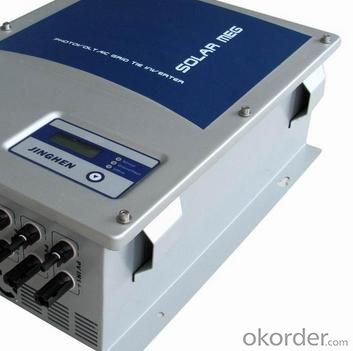
4, Detailed Specification
INPUT | |
Input voltage range | 185~265±5Vac |
OUTPUT | |
Output voltage range | 185~265±5Vac (AC mode) , 230Vac (DC mode) |
Output frequency (DC mode) | 50Hz (48~54Hz) or 60Hz(58~64Hz), same as AC(AC mode) 50Hz ±0.3Hz (DC mode) |
Wave form | Sine wave (DC Mode) |
Transfer time | 10ms. (Typical) |
BATTERY | |
Rated charging current (max.) | 45A |
Norminal DC input voltage | 12V |
Min. DC start voltage | 20V / 40V |
PHYSICAL | |
Unit dimension (mm) | 526*277*212 |
Master box dimension (mm) | 620*350*370 |
Net weight (1pc, kg) | 22.8 |
Benefits of solar cell cost
• Solar power makes up three-quarters of new U.S. electricity generation, and more than half a million U.S. homes and businesses have now gone solar.**
• You can lock in surprisingly low electricity rates by going solar with Sunrun. And we lock in those rates for 20 years. Then the next time utility rates rise, you’ll be laughing all the way to the bank.
• Your neighbors are already saving. Did you know that Americans are installing new solar panels every 3 minutes? They know that solar electricity is clean, renewable and easy on the wallet.
• Sunrun takes care of everything. We design, install, and maintain your system the entire time. We also guarantee your energy production. You get a worry-free system – while enjoying 20% savings on your electric bill.*
• It’s a nice thing to do for the environment. You can help create a planet run by beautifully clean energy from the sun.
How much money can a solar cell cost save
The real question is "Is it worth switching to solar generated power?" The answer depends greatly on your situation, economically, geographically, and politically. It's still a significant up-front investment, whether that comes out of your own pocket or you find a bank that may, possibly, with much convincing, lend it to you. The payback period - more accurately, the break-even point - or how long will it take to recuperate the cost of ownership, varies extremely. In sunny climates where electricity prices are rising, switching to solar basically locks in your electricity price and the system can pay for itself in a few years. But if you're still connected, i.e. a grid-tied system, your utility company may charge you more for using less, unless they have buy-back agreement, which most in my area do not. Also with grid-tied, if the grid goes out, you can't use your array anyway, unless you have a means of completely isolating it from utility power.
So, is it worth switching? Although the price of the components have dropped over the years, this is still a very complicated question.
In many places now, you can go solar for $0 or close to $0 down through solar leasing companies or through simple bank loans. Then you’re just paying monthly payments like you would on a house, car, or college loan. However, in this case, your payments are likely to be less than the amount of money you’re saving on your electricity bill. So, really, you’re not paying any more than you’re already paying for electricity you’re saving money!
- Q: Can solar cells be used to power security systems?
- Yes, solar cells can be used to power security systems. Solar cells convert sunlight into electricity, which can be stored in batteries for continuous power supply. This makes solar cells an ideal and sustainable solution for powering security systems, especially in remote or off-grid locations where access to grid electricity may be limited.
- Q: Can solar cells be used on curved surfaces?
- Yes, solar cells can be used on curved surfaces. Flexible solar cells have been developed that can conform to various shapes, allowing them to be installed on curved surfaces such as buildings, vehicles, or even clothing.
- Q: How do solar cells handle partial shading?
- Solar cells are designed to handle partial shading by utilizing bypass diodes. These diodes allow the current to bypass the shaded cells, ensuring that the unshaded cells continue to generate power. This helps to minimize the impact of shading on the overall efficiency of the solar panel.
- Q: How do solar cells perform in areas with high levels of bird droppings?
- Solar cells can experience a decrease in performance in areas with high levels of bird droppings. The droppings can block sunlight, reducing the amount of light reaching the solar cells and thereby diminishing their efficiency. Regular cleaning and maintenance can mitigate the impact of bird droppings on solar cell performance.
- Q: Can the 156x156mm high efficiency single crystal cells assembly function better compared to the traditional one?
- Our company is planning to upgrade our supply system into the 156x156mm high efficiency single crystal celsl assembly, but we are still not sure if it is really that great.
- Q: How do solar cells perform in extreme weather conditions?
- Solar cells generally perform well in extreme weather conditions, but their efficiency can be affected to some extent. In extremely hot conditions, solar cells may experience a decrease in efficiency due to increased thermal losses and a decrease in voltage output. Similarly, in extremely cold conditions, solar cells may also experience reduced efficiency due to decreased sunlight absorption and increased resistance. However, modern solar cell technologies are designed to withstand a wide range of weather conditions and have protective coatings to ensure their durability. Overall, while extreme weather conditions can have some impact on solar cell performance, they still remain a viable and reliable source of renewable energy.
- Q: How do solar cells perform in areas with high levels of chemical pollutants?
- Solar cells may experience a decrease in performance in areas with high levels of chemical pollutants due to the reduced intensity of sunlight reaching the cells. The presence of pollutants in the atmosphere can block or scatter sunlight, leading to a decrease in the amount of energy absorbed by the solar cells. This can result in a reduction in the efficiency of solar panels and a decrease in their overall power output. Regular cleaning and maintenance of the solar panels can help mitigate the negative impact of chemical pollutants on their performance.
- Q: Can solar cells be used for desalination purposes?
- Yes, solar cells can be used for desalination purposes. Solar-powered desalination systems, such as solar stills and solar desalination plants, harness the energy from the sun to power the desalination process. This renewable energy source helps reduce the environmental impact of desalination and promotes sustainable water production.
- Q: Can solar cells be used for powering hotels?
- Yes, solar cells can be used for powering hotels. Solar power is a renewable energy source that can generate electricity to meet the energy demands of hotels. By installing solar panels on the hotel rooftop or in nearby areas, hotels can harness the power of the sun to generate clean and sustainable energy, reducing their reliance on traditional energy sources and lowering their carbon footprint.
- Q: Can solar cells generate electricity at night?
- No, solar cells cannot generate electricity at night as they rely on sunlight to produce electricity.
Send your message to us
High Efficiency Monocrystalline Solar Module with Organic Printed Solar Cells
- Loading Port:
- Shanghai
- Payment Terms:
- TT or LC
- Min Order Qty:
- 2250 watt
- Supply Capability:
- 30000000 watt/month
OKorder Service Pledge
OKorder Financial Service
Similar products
Hot products
Hot Searches
Related keywords
